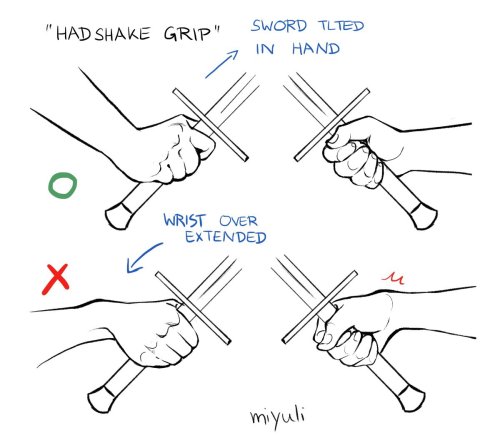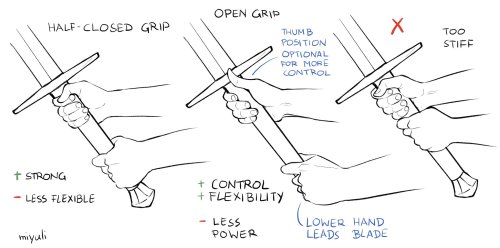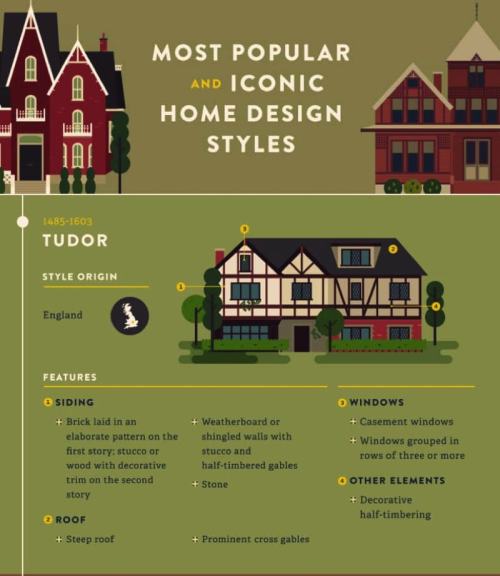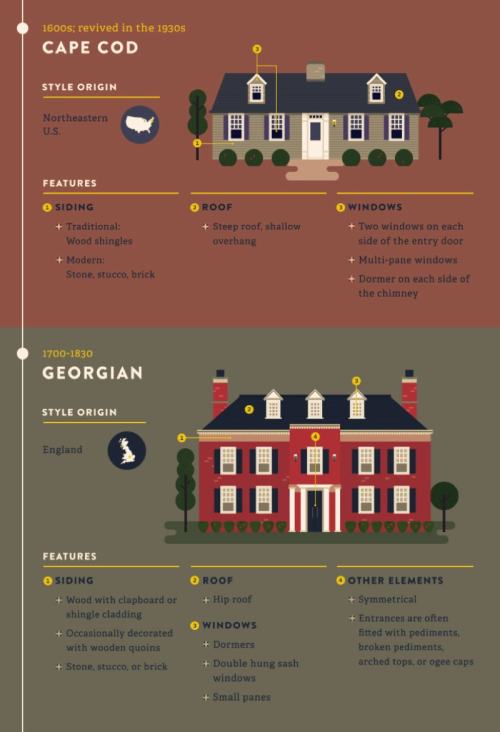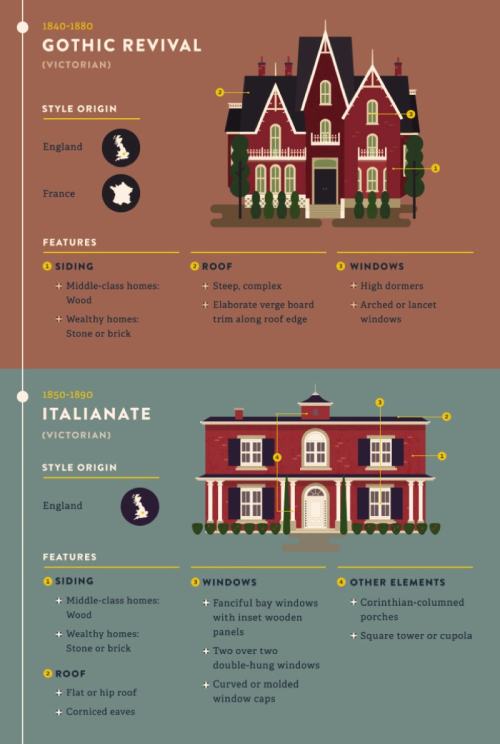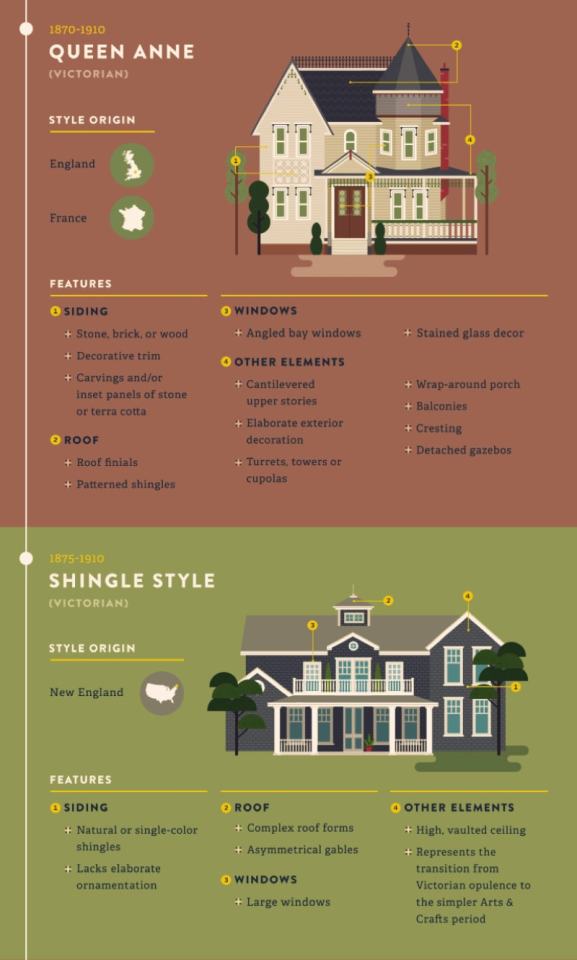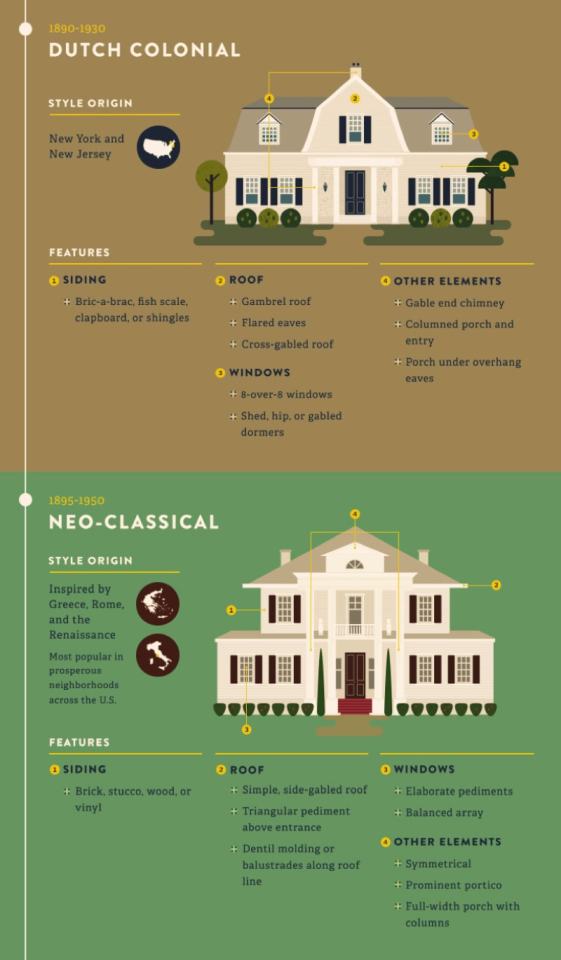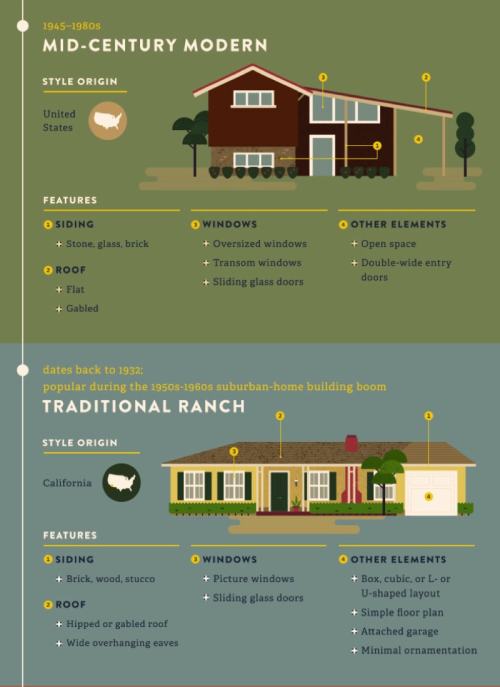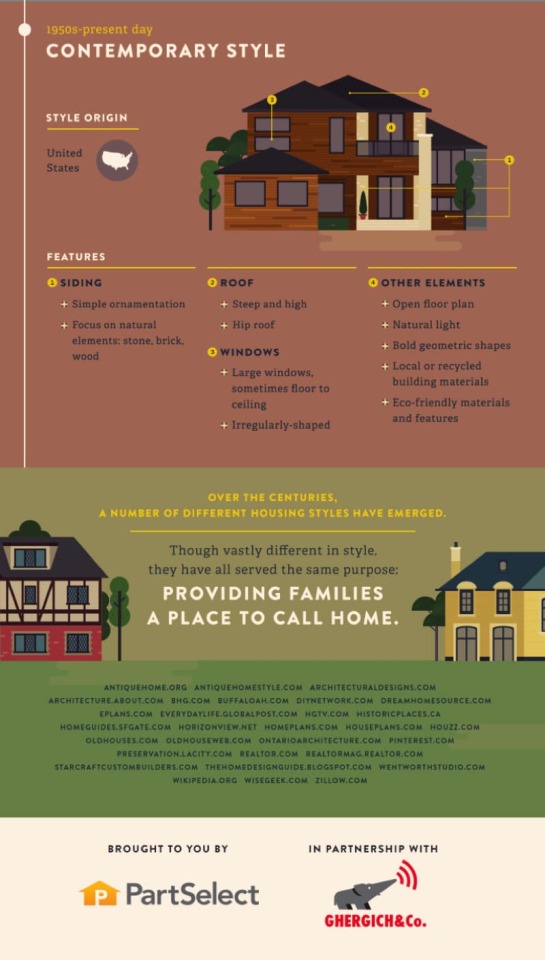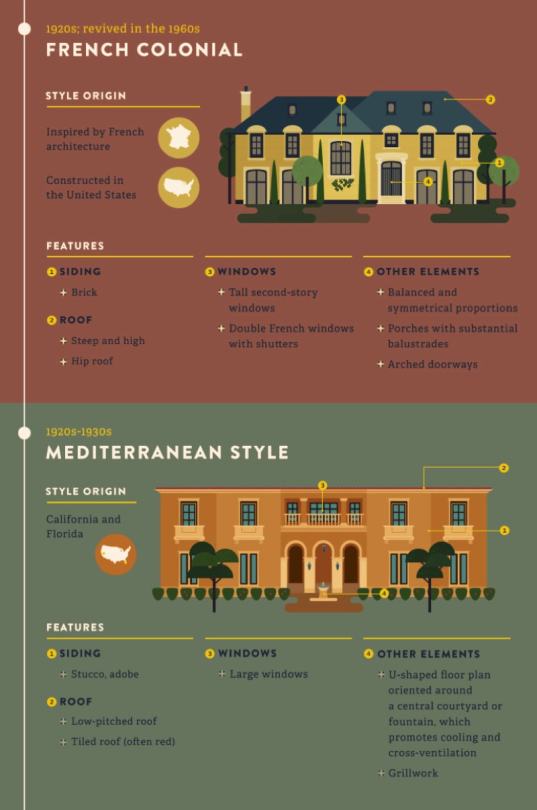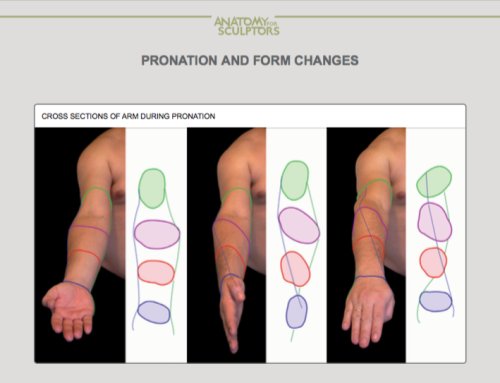“Sneaker And Ankle Drawing Techniques”
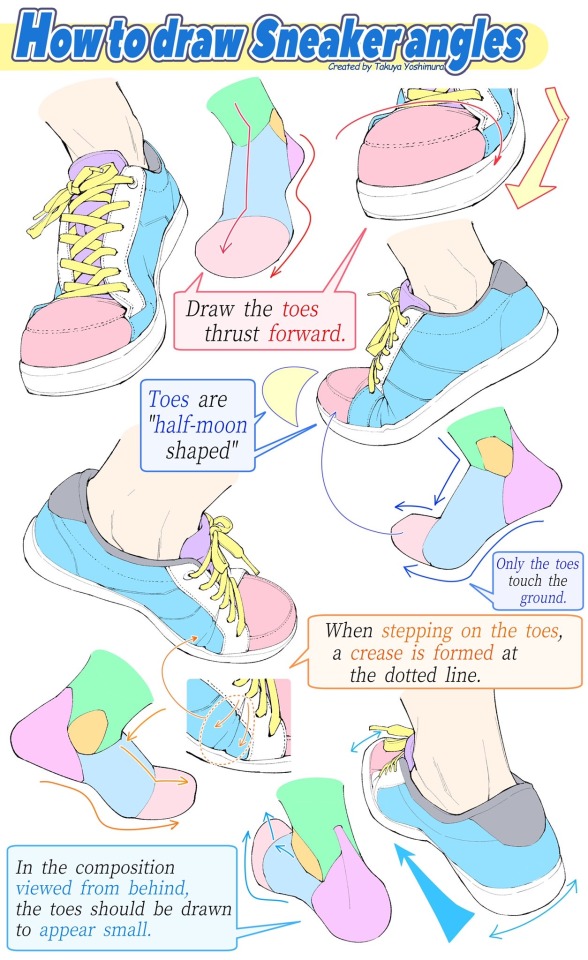
“Sneaker and ankle drawing techniques”
Source: Twitter at takuya_kakikata
More Posts from Scrapbox-in-the-attic and Others
can you give a run down on skintones?
PART ONE: COLOR SELECTION.
In painting skin tones, a lot of the time I see people choose colors that are over-saturated or unbalanced. There isn’t really an exact art to this that I can explain—you just need to get a feel for what saturation balance you need for that particular skintone. Here are some examples of what I usually pick.

As you can see, I used different base colors (orange, reddish, yellow) for the skin shades in all three examples. The reason for this is because all skin tones have a different base color besides just Light, Medium, and dark. Some people divide them into categories of “warm” and “cool.” Pantone has some really good examples and references for this.

PART TWO: COLOR VARIATION.
Another big part about drawing and painting skin tones that a lot of people forget is how skin thickness affects color variation. The presence of bone, blood, and muscle underneath the skin affects its colors. This is especially noticeable on the face.

The colors here are a little exaggerated to show my point, but with a little adjusting and blending…

Voila! Subtle, but more realistic.
PART THREE: DETAILS.
Our skin is the largest organ on our body, and as our body’s first line of defense against the outside world, it’ll be covered with tiny details and imperfections. Things like sunburns, tans, freckles, scars, and facial hair all add character to your subject matter. Here are some examples!
TANS: Everyone tans differently, depending on your ethnicity and skin tone. Fair skinned folks tend to burn more than tan, which means you’ll need a more startling, eye-catching red.If you have a skin type that tends to tan more, the color will be more brown than red. For black skin tones, the tan is less red. (And while we’re on the subject: black people DO tan, so it’s important for you to put on sunscreen and be careful in the sun, too.)

Those are the areas that the sun tends to hit the most—and things like goggles, hats, and masks can change the shape of that area.
FRECKLES AND MOLES: Freckles are also products of the sun. Some people have freckles that stay year-round, while others have freckles that fade in the winter and return in the summer. Moles are skin cells that grow in a cluster instead of being spread throughout the skin. When exposed to the sun, they tend to darken. (Another note on skin health: if you have any oddly-shaped/colored moles, moles that have changed color, size, or shape, or anything of the sort, please check with your doctor!)
Freckles like to cluster around each other, sort of like stars, and they vary greatly in size. You can have a few freckles in one place, or a lot of freckles in multiple places. Most commonly freckled areas are your face, shoulders and neck, back, and forearms.

FACIAL HAIR: Facial hair also affects the colors of the face. For simplicity’s sake we’ll be using black hair, as it is the most noticeable. Facial hair usually grows in these areas, and can make the skin look blueish/grayish because of the darker hairs beneath the skin. If your hair is red, this also very noticeable.

END NOTE.
There you go! That’s about all I can think of at the moment for skin tones. As always, references and practice are your best friend (and so is this neat little trick that pheberoni has.) Good luck with your arting!


“Notes on skirts and pants”
Source: miyuli on twitter
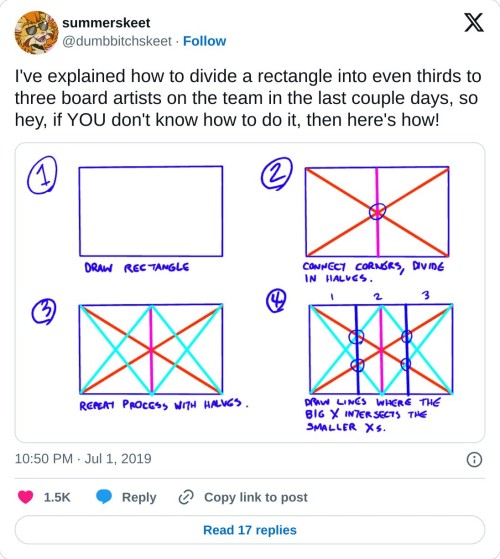
really helpful technique ^ once you know how to divide by halves and thirds it makes drawing evenly spaced things in perspective waaay easier:


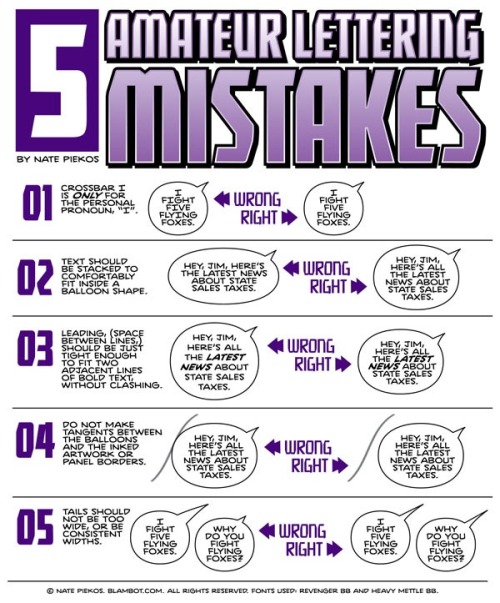
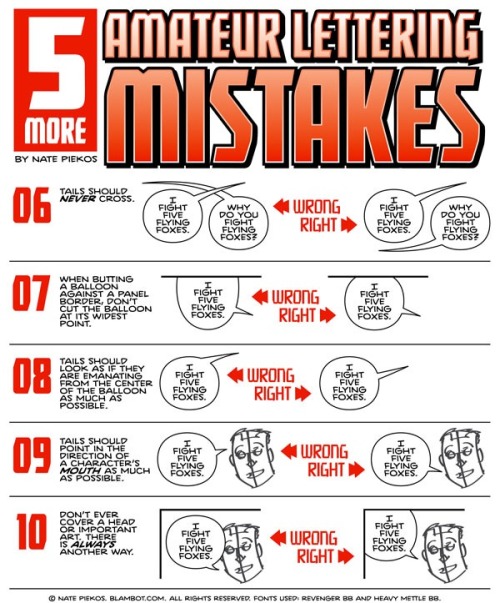
Some good tips about comic lettering from Nate Piekos of Blambot.com


Dungeon Meshi - Profiles and Eyes Ryoko Kui https://nklerwjrejhshaasl.tumblr.com/
RadenWA is honestly a hero for these




they're got even more than these, too!
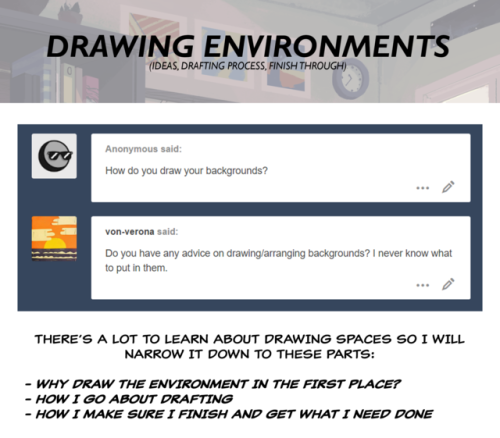
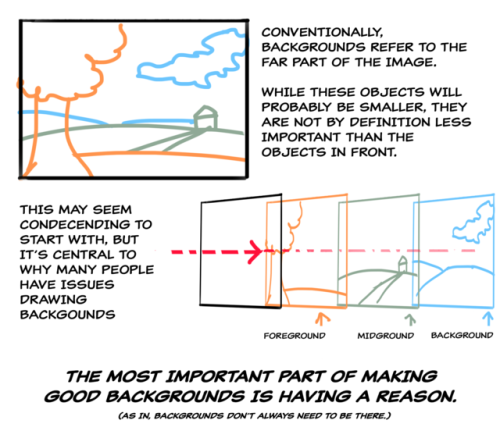
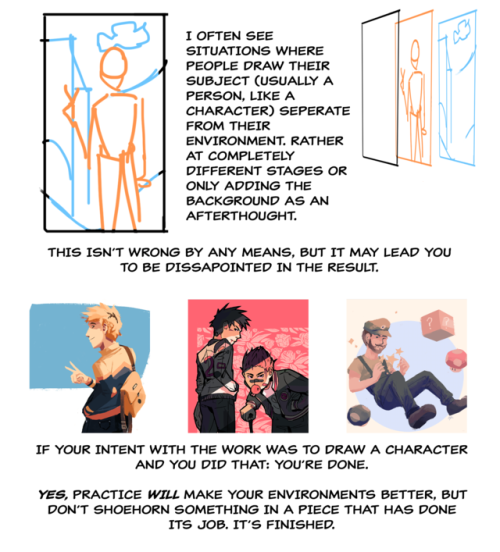
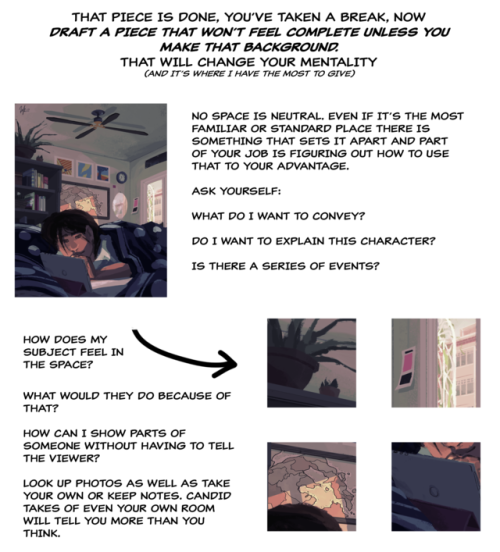
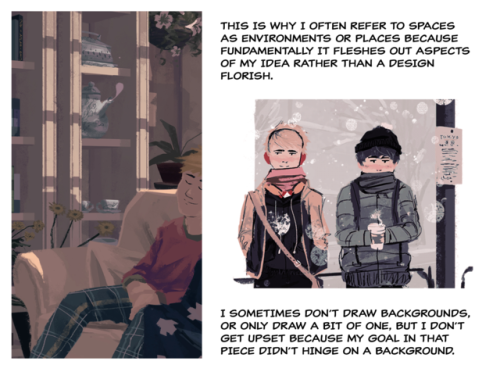
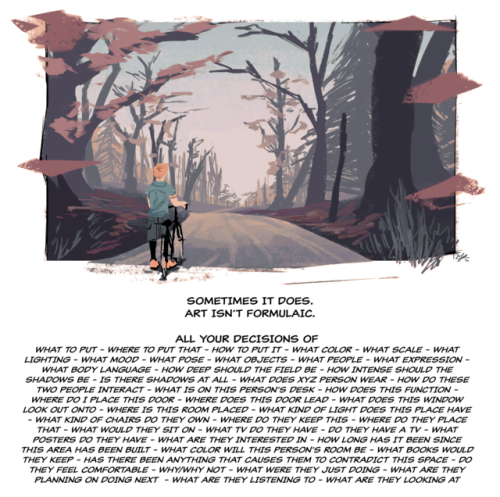
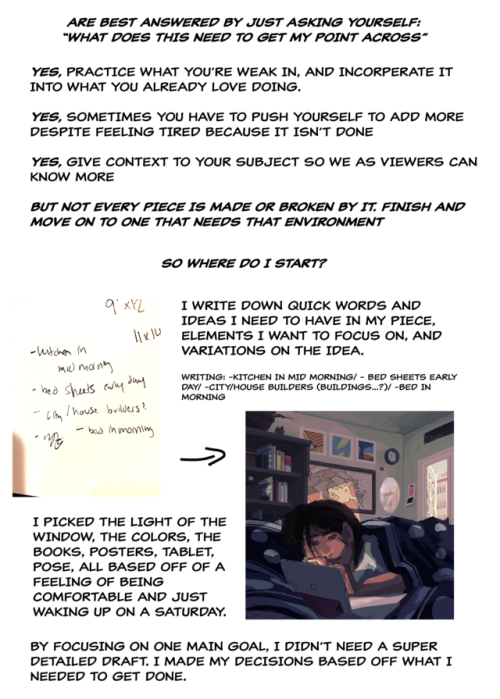
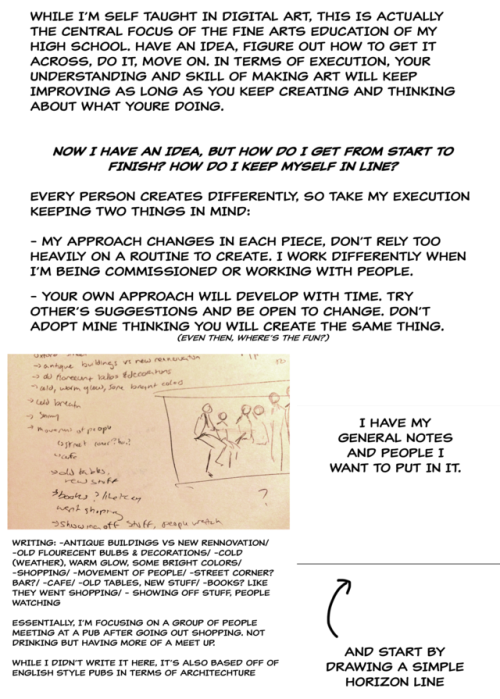
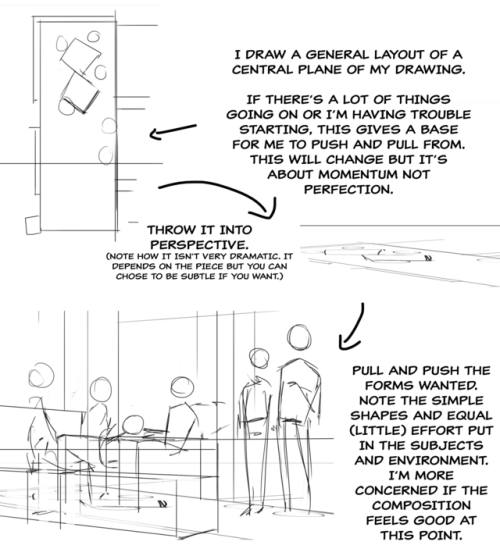

friday night tutorial time
this post is massive but i tried to cover both the conceptual and technical side, hopefully it’s somewhat coherent
continued under cut
Keep reading
-
 frei-betao liked this · 1 week ago
frei-betao liked this · 1 week ago -
 trixten01 liked this · 1 week ago
trixten01 liked this · 1 week ago -
 lambsoul liked this · 1 week ago
lambsoul liked this · 1 week ago -
 amnezjawron liked this · 1 week ago
amnezjawron liked this · 1 week ago -
 landofthelustrous liked this · 1 week ago
landofthelustrous liked this · 1 week ago -
 pinkenigmadreamer liked this · 1 week ago
pinkenigmadreamer liked this · 1 week ago -
 the-bee-bitch liked this · 1 week ago
the-bee-bitch liked this · 1 week ago -
 pretty-fried-bitch liked this · 1 week ago
pretty-fried-bitch liked this · 1 week ago -
 goblin-in-shorts liked this · 1 week ago
goblin-in-shorts liked this · 1 week ago -
 chernobylcatfish09 liked this · 1 week ago
chernobylcatfish09 liked this · 1 week ago -
 urnilay liked this · 1 week ago
urnilay liked this · 1 week ago -
 napa-the-yappa liked this · 1 week ago
napa-the-yappa liked this · 1 week ago -
 soggy-cerealz liked this · 1 week ago
soggy-cerealz liked this · 1 week ago -
 notatumaccount liked this · 1 week ago
notatumaccount liked this · 1 week ago -
 tree-mans liked this · 2 weeks ago
tree-mans liked this · 2 weeks ago -
 giogiovan13 liked this · 2 weeks ago
giogiovan13 liked this · 2 weeks ago -
 colombelli-fdvd liked this · 2 weeks ago
colombelli-fdvd liked this · 2 weeks ago -
 coconut-ice-cream-137 liked this · 2 weeks ago
coconut-ice-cream-137 liked this · 2 weeks ago -
 ghostyboo111 liked this · 2 weeks ago
ghostyboo111 liked this · 2 weeks ago -
 skullywullypully reblogged this · 2 weeks ago
skullywullypully reblogged this · 2 weeks ago -
 skullywullypully liked this · 2 weeks ago
skullywullypully liked this · 2 weeks ago -
 asexual-can-of-pringles reblogged this · 2 weeks ago
asexual-can-of-pringles reblogged this · 2 weeks ago -
 nightmare767 liked this · 2 weeks ago
nightmare767 liked this · 2 weeks ago -
 1nd13gh0st reblogged this · 2 weeks ago
1nd13gh0st reblogged this · 2 weeks ago -
 1nd13gh0st liked this · 2 weeks ago
1nd13gh0st liked this · 2 weeks ago -
 ruen-me liked this · 2 weeks ago
ruen-me liked this · 2 weeks ago -
 cloudofthecats reblogged this · 3 weeks ago
cloudofthecats reblogged this · 3 weeks ago -
 iiinkos reblogged this · 3 weeks ago
iiinkos reblogged this · 3 weeks ago -
 iiinkos liked this · 3 weeks ago
iiinkos liked this · 3 weeks ago -
 rj365 liked this · 3 weeks ago
rj365 liked this · 3 weeks ago -
 everest81 liked this · 3 weeks ago
everest81 liked this · 3 weeks ago -
 lilacrainn liked this · 3 weeks ago
lilacrainn liked this · 3 weeks ago -
 jikapu-2-0 liked this · 3 weeks ago
jikapu-2-0 liked this · 3 weeks ago -
 titrationturtle reblogged this · 3 weeks ago
titrationturtle reblogged this · 3 weeks ago -
 sketchunit liked this · 3 weeks ago
sketchunit liked this · 3 weeks ago -
 atiredinsomniac liked this · 3 weeks ago
atiredinsomniac liked this · 3 weeks ago -
 bunny-663 liked this · 3 weeks ago
bunny-663 liked this · 3 weeks ago -
 alskx2 reblogged this · 3 weeks ago
alskx2 reblogged this · 3 weeks ago -
 punksrighttit liked this · 3 weeks ago
punksrighttit liked this · 3 weeks ago -
 sporadicthunderlight liked this · 3 weeks ago
sporadicthunderlight liked this · 3 weeks ago -
 beny6666 liked this · 3 weeks ago
beny6666 liked this · 3 weeks ago -
 sonefire liked this · 3 weeks ago
sonefire liked this · 3 weeks ago -
 noxernia reblogged this · 3 weeks ago
noxernia reblogged this · 3 weeks ago -
 entitiy-4 reblogged this · 3 weeks ago
entitiy-4 reblogged this · 3 weeks ago -
 entitiy-4 liked this · 3 weeks ago
entitiy-4 liked this · 3 weeks ago -
 femrefrigerator liked this · 3 weeks ago
femrefrigerator liked this · 3 weeks ago -
 robottheninja reblogged this · 3 weeks ago
robottheninja reblogged this · 3 weeks ago
